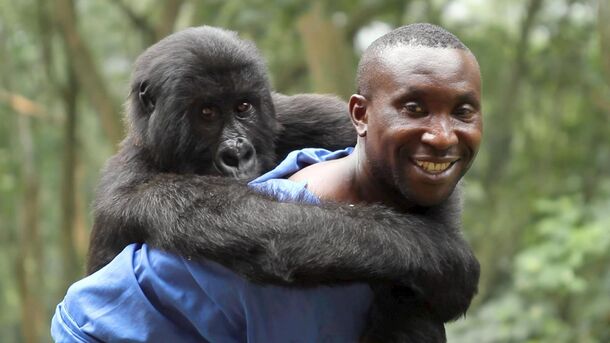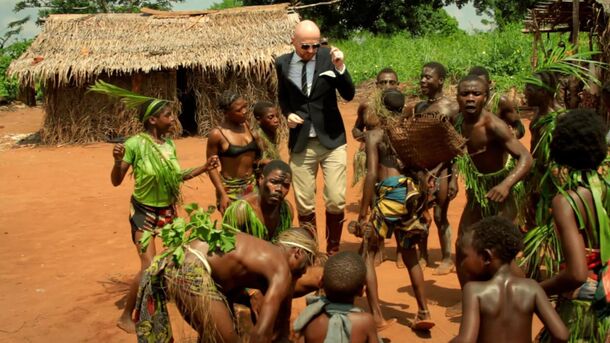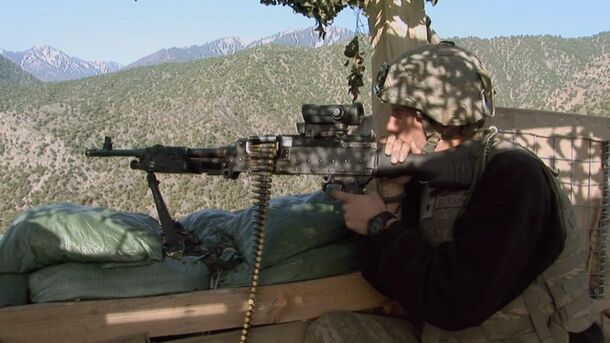4 Mind-Blowing Documentaries That Put the Lives of Its Creators at Risk

A look into the craziest stories ever told, including some behind-the-scenes commentary from the directors.
Every single time after watching a documentary, I always think about how much hard work, sweat and tears goes into making a movie like this. And no, I'm not saying that fiction is easier to film. It's not. However, there's something so special about documentaries that regular movies just can't quite replicate.
I've always been fascinated by how documentaries can transport you into someone else's reality and show you a completely different way of living and thinking.
But while I can comfortably sit at home and watch these unbelievable stories, there's a dedicated person or a group of people behind the camera who put their lives on the line to capture these moments. These are 4 documentaries that deeply impressed me and actually put the lives of the people making it at risk.
The Act of Killing (2012): Evil Looks Straight Into the Camera
I couldn't even think it’s possible to sit across from someone who's proudly describing how they murdered hundreds of people and then have the courage to ask them to recreate those scenes for your camera. But that's exactly what director Joshua Oppenheimer did in The Act of Killing.

The filming didn't happen overnight, as you can imagine. Oppenheimer spent years gaining the trust of Indonesian death squad leaders who were responsible for mass killings in the 1960s. He asked these men to recreate their atrocities in the style of their favorite Hollywood genres. And... They actually did.
Most of the Indonesian crew members had to be credited as Anonymous to protect their safety.
In an interview to The Guardian, Oppenheimer revealed:
“I can't go back [to Indonesia] since releasing The Act of Killing. I get threats regularly on Facebook and email. I think I could get into Indonesia now, but I have reason to think I wouldn't get out again safely.”
You can watch The Act of Killing right now on Netflix, but be quick as it leaves the streaming platform in April.
Virunga (2014): Trying to Protect Animals During a War
Protecting wildlife is difficult enough, especially when an unexpected war breaks out.

Director Orlando von Einsiedel ventured into Virunga National Park in the Democratic Republic of Congo to document the brave rangers protecting the world's last mountain gorillas. What he didn't expect was to find himself in the middle of a violent conflict.
In an interview to Bizarre Culture, Einsiedel shared:
“The film doesn’t portray the conflict as anything other than what it is, which is miserable and terrifying. I suppose some people fake the things that give their films impact, but this wasn’t something that I could control, it wasn’t like a scripted film. It just happened. If I knew that war would break out around us, I wouldn’t have wanted to be there.”
The documentary ended up becoming this mixture of wildlife and war journalism. And it's definitely one worth watching. You can find Virunga on Netflix right now.
The Ambassador (2011): the Blood Diamond Trade
The documentary that manages to not lose a comedic side despite the very real danger.

If there was ever a documentary that made me (respectfully) question the sanity of its creator, it's The Ambassador (2011). Danish journalist Mads Brügger went undercover as a diplomat to expose the corrupt world of blood diamond trafficking in Central Africa.
Equipped with hidden cameras and a lot of dark humor, the movie showed just how easy it is to integrate yourself into that world and use your fake position to smuggle diamonds.
Brügger revealed a little behind-the-scenes in an interview to Rialto Channel. He said:
“I used my father’s name, Cortzen, and of course if you google that name now you will eventually find out about who I am, but I was really terrified of them really looking into me. I think in theory they should be able to, but apparently they didn’t. Of course if you have money and signal you do have money, people stop being critical about who you are.”
Brügger really did become a diplomat (though totally a sketchy one) and he did get involved in the diamond trade. The whole time he was surrounded by people who wouldn't have hesitated to have him killed if they discovered what he was really up to.
Available completely free of charge on Hoopla, Kanopy and Plex, this documentary will keep you on the edge of your seat while showing you just how far some filmmakers will go to find the truth.
Restrepo (2010): Terrors of War

When most war documentaries are filmed from a safe distance or long after the fact, Restrepo throws you right into the firefight.
Tim Hetherington and Sebastian Junger spent a year with a U.S. Army platoon in Afghanistan's deadliest valley. They both were living, eating and dodging bullets right alongside the soldiers.
One of the directors, Tim Hetherington, explained in an interview to BFI what the most crucial thing he cared about while making the movie was. He said:
“I think what gives the film its power is its intimacy with the soldiers. As an image-maker I became much more interested in the interrelationships between the soldiers and my own relationship to the soldiers than I was in the fighting.”
The filmmakers literally put themselves in the line of fire to capture the reality of war. And sadly, this commitment to truth ultimately cost Hetherington his life. He was killed in 2011 while covering the Libyan civil war.
Restrepo is available right now on Apple TV+. Viewer discretion is advised.
